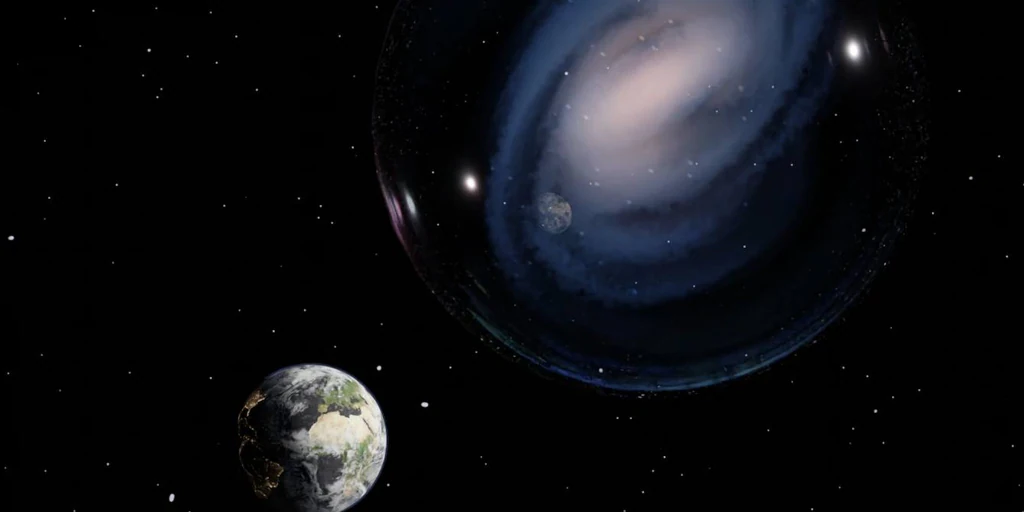Under the guidance of scientists from the CSIC-INTA Center for Astrobiology (CAB), an international team of researchers has discovered a “twin” galaxy of ours (a barred spiral) in a place, and at a time, where such a thing should not exist. Out. The discovery was made using the James Webb Space Telescope and was recently published innature“, challenges what we’ve been thinking about the formation and evolution of the first galaxies.
The universe is 13.76 billion years old, and astronomers have until now believed that spiral galaxies like our own Milky Way could not acquire their complex, ordered structure until at least 7 billion years after the Big Bang. That is, until the age of the universe reached at least half its current age. But they were wrong.
“Contrary to what was expected – says Luca Costantin, lead author of the article – this discovery reveals that galaxies similar to the Milky Way already existed 11.7 billion years ago, when the universe was only 15% of its current age.” The newly discovered galaxy, called CEERS-2112, is a perfectly formed spiral galaxy that is just 2 billion years away from the Big Bang.
Difficult observation
Since the life of a galaxy is measured in billions of years, to study the evolution of the Milky Way, scientists have no choice but to study many galaxies simultaneously, each at a different point in its evolution, and each reconstruct the way ours reached maturity.
In the nearby Universe, most massive spiral galaxies, such as our own Milky Way, exhibit an elongated, ribbon-shaped structure in their central regions. On the contrary, according to predictions of theoretical models, the physical and dynamical conditions of the early Universe should not allow the formation of bars in younger, more distant galaxies. Galactic bars play an essential role in galactic evolution, because they favor the mixing of elements, which is necessary for the formation of third or fourth generation stars, such as the Sun, and in fact, scientists suspect that the Milky Way bar rotates. With a cylindrical shape, like a toilet paper holder, it directs gas toward the galactic center and triggers explosions of star formation.
“Galaxies were not always what we see around us – says Pablo J. Perez Gonzalez, second signatory of the article – because its mass and structure vary throughout its life. “Although barred galaxies similar to the Milky Way are common in the nearby universe, until now we thought they should be extremely rare when we look back in time.”
A sign of maturity
Until recently, scientists thought this central bar was a sign that galaxies were reaching full maturity, something that probably only happened halfway through the universe’s evolutionary path. Observations made with the Hubble Space Telescope also showed that the early universe contained very few barred galaxies.
But James Webb’s extraordinary abilities revolutionized astrophysics, showing that the distant universe is not exactly what scientists expected. In fact, the new telescope can collect six times more light than Hubble, allowing it to see details of distant galaxies that Hubble did not observe.
“With James Webb – explains Cristina Cappello, also co-author of the article – we have for the first time the technology and instrumentation needed to study the morphology of very distant galaxies in detail. “Investigating how galaxies obtained the structure that characterizes them today is essential to understanding their formation and evolution processes.”
Thus, the discovery of CEERS-2112 demonstrates that barred snails can evolve in a fraction of the time scientists believe is necessary. According to Alexander de la Vega, an astronomer at the University of California, Riverside and co-author of the study, this could happen in just a billion years.
Change astronomy
According to this researcher, the discovery of Circe-2112 could change at least two aspects of astronomy. “First,” he points out, “theoretical models of galaxy formation and evolution must take into account that some galaxies become stable enough to host bars at a very early stage in the history of the universe. “These models may need to adjust for the amount of dark matter forming galaxies in the early universe, as dark matter is thought to influence the rate at which bars form.”
«Secondly – continues the scientist – the discovery of CEERS-2112 shows that structures such as bars could be detected when the Universe was very young. This is important because galaxies in the distant past were smaller than they are now, making it difficult to find bars. “The discovery of CEERS-2112 paves the way for the discovery of more bars in the young universe.”


:quality(85)/cloudfront-us-east-1.images.arcpublishing.com/infobae/4ZZ2FSIOGRDANDY6WH34OA6XTA.jpg)
:quality(85)/cloudfront-us-east-1.images.arcpublishing.com/infobae/YMJL5TYTFCDXREBK5GQ3GF2NSE.jpg)

:quality(85)/cloudfront-us-east-1.images.arcpublishing.com/infobae/6WHDP7SXDYK6C4RCCMWTB7IJXU.jpg)